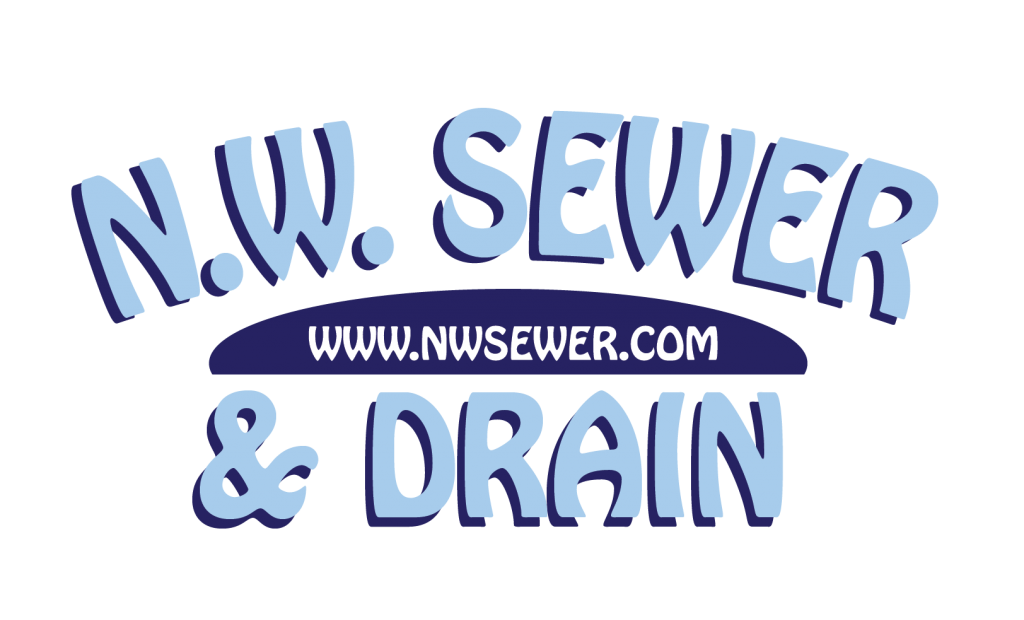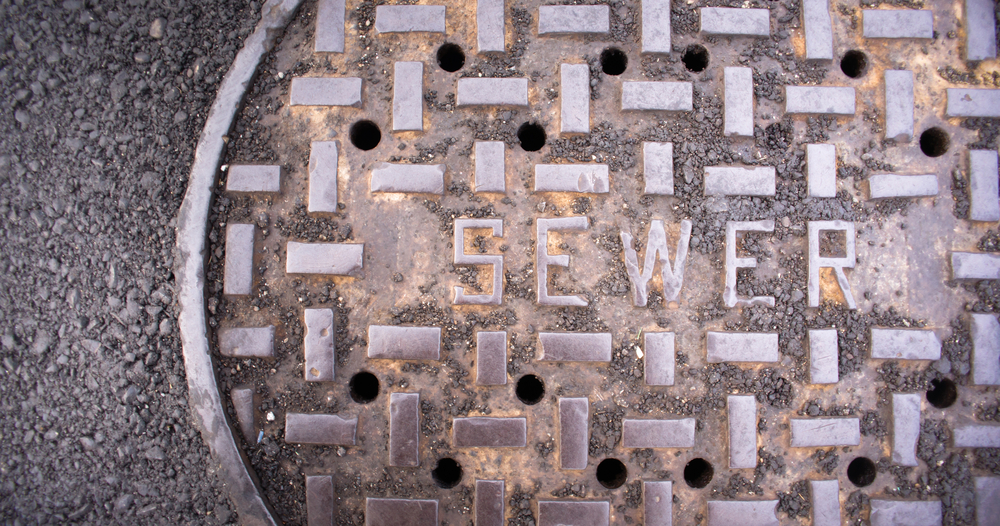Every homeowner never wishes to encounter drainage issues, but the reality is that plumbing issues are often always inevitable. Even new homes are not exactly free from drain issues. At some point, you might experience a slow-moving drain or a completely blocked sewer line. Even if it’s a minor issue, knowing what to do can save you some trouble.
It’s essential to understand how your home’s drain system works, so you know exactly how to address issues arising in the drainage. In this post, we’ll dive deeper into understanding the sewer drain system as it applies to residential and commercial buildings and how to care for and prevent drain issues in your home drainage system.
What is Sewer Drainage?
To understand sewer drainage, let’s first explain what sewer means. Sewer is
the wastewater generated by a community of people. Wastewater or Sewage is typically discharged from the plumbing of residences, commercial, institutional, and public facilities in your town or city. Sewage can be greywater or blackwater.
Sewer system or sewer drainage is a kind of drainage system drain is a network of underground pipes that carry sewage, wastewater, and surface water to a sewer. The sewage is then carried to an onsite sewage facility or a sewage or wastewater treatment facility. During sewage treatment, the wastewater is treated to remove the sewage contaminants.
This process aims to produce an effluent that can be discharged into the surrounding environment or reused in other applications. Decontamination or sewage treatment before discharge or reuse helps prevent water pollution from raw sewage discharges. Note that the generation of wastewater is proportional to the water use rate in buildings within a locality.
How Sewer Systems Work
Understanding how sewage systems work allows you to know how wastewater is generated and how it ends up in wastewater treatment plants.
The sewage system starts from residences and commercial facilities in an area. As water is used in homes — in kitchens and bathrooms — and in commercial and industrial buildings, wastewater is generated, and it flows through drain pipes, from sinks, toilets, and bathtubs, and runs underground into the sewer system leading from the buildings to the city sewer system.
The flow of sewer from buildings to the local sewer mostly depends on gravitational pull. An essential aspect of wastewater treatment is the removal of solids from the wastewater so that the sewage will separate into sludge and water. Secondly, oxygen is added to the tank to promote the growth of microorganisms which, in turn, consumes the leftover waste in the wastewater and then settles at the bottom of the tank.
After this, about 90% of the waste, including solids and chemicals, has been removed from the wastewater. The leftover sludge is further processed in sludge digesters to eliminate bacteria. The sludge is dewatered in another plant, then dried and converted into fertilizers.
What Causes Sewer Problems?
Several reasons lead to sewer blockage or sewer backup in any building. The most common sewer problems are slow-moving drains, clogged drains, sewer backup, and in some sewer cases, sewer pipes may end up broken. To prevent sewer problems, one needs to know the factors or activities that lead to specific sewer problems.
Practicing good use of your home’s drain system is a great way to save yourself from having to deal with multiple sewer issues. Here’s are a few causes of sewer problems:
Broken drain pipes: when your drain pipes become broken, you can expect to experience sewer problems, and the sooner you locate the faulty pipes and repair or replace it, the earlier you can stop the issue from deteriorating.
Grease and fat: as grease from food continues to accumulate in your sewer line, it could lead to clogged drains as well. To correct this, you can run hot water down the drain. However, if there’s a massive clog of grease, it is best to get the help of a drain specialist because the grease will simply line the drain pipe, then cool and solidify again.
Debris: all sorts of waste pass through drain pipes and sewer lines. Over time, debris, food particles, and other solid waste, including foreign wastes, will accumulate and block the sewer line.
Tree roots intrusion: tree roots extend many meters under the ground, so if you live in areas with lots of trees, you want to watch out for roots growing in your drain lines. Even if you don’t have a tree planted close to your mainline sewer line, this can also happen. In severe cases, it can become a total blockage.
Sagging sewer lines: when sewer lines begin to age, it can lead to soil shifting or formation of sinkholes, thereby leaving the wastewater from the sewer line to gather in pools in the lower parts. This causes the water not to drain correctly and eventual sewer backup.
How to Prevent Sewer Problems in Your Home
Here are things you can do to avoid sewer problems in your home;
- Get a sink strainer to help you keep out unwanted stuff that may go into the drain
- Avoid disposing of things like fats, oils, vegetables, coffee grounds, or grains in the sink. Instead, use the dispose of them in your garbage can
- Try flushing the pipes using hot water once in a while to clear out any grease that might be sticking to the walls of your pipes
- Avoid using chemical drain cleaners, as they could gradually start damaging the pipes
- Never flush diapers, sanitary pads, and other hygiene products down your toilet
- Consider using a hair catcher in your showers and bathtub
- Do not hook up the gutters or downspouts to sanitary sewers
- Avoid throwing food items down the drain, even if you have sliced them up into bits
- Make it a regular practice to inspect your drain pipes and sewer line at least every three to five years to remove clogs that might have accumulated over time.
- Pay attention to any abnormal sign, such as smells and gurgling sounds in your drain pipes and toilet
The Importance of Properly Maintaining Your Home’s Sewer System
Ensuring your drain system is clear of clogs and debris allows you to enjoy your home’s plumbing and save you the cost of repair. When it comes to clearing out clogs, you want to seek the help of a professional sewer and drain specialist. It is best to discuss the issue with the drainage contractor before commencing repairs.
At N.W. Sewer & Drain, we specialize in helping out clients clear out difficult clogs from sewer lines, repair damaged drains, and address other issues like sewer backup. For an affordable, reliable, and timely drainpipe cleaning, feel free to contact us at 206-931-7728 to schedule an inspection of your sewer line and pipes.
FAQs About Sewer Drainage Systems
1. How does a sewer drainage system work?
A sewer drainage system operates by channeling wastewater from homes, businesses, and public facilities through a network of underground pipes. These pipes carry the wastewater to a treatment facility where contaminants are removed. The process is primarily driven by gravity, which helps direct the flow of water downhill. In more complex systems, pumps may assist in moving water where gravity alone isn’t sufficient. Once treated, the water is safely released back into the environment or reused in other applications, reducing the risk of water pollution.
2. What are the common problems with sewer drainage systems?
Sewer drainage systems can encounter issues like blockages, leaks, and backups. Blockages often occur due to the buildup of grease, debris, or tree roots infiltrating the pipes. Leaks may develop in aging pipes or due to shifting soil. Backups can happen when the system is overwhelmed by excessive water, such as during heavy rainfall. Regular maintenance and inspections can help identify and address these problems before they escalate into more serious issues.
3. Why is my sewer line frequently getting clogged?
Frequent clogs in your sewer line might be due to improper disposal of waste, such as flushing non-degradable items like wet wipes or feminine hygiene products. Grease and food particles can also accumulate over time, leading to stubborn blockages. Additionally, if you live in an area with older plumbing, the pipes may be more susceptible to damage and clogging. To reduce the frequency of clogs, it’s essential to be mindful of what goes down the drain and consider regular professional cleanings.
4. How can tree roots affect my sewer drainage system?
Tree roots are naturally attracted to the moisture in sewer lines, and they can infiltrate small cracks in the pipes. Once inside, the roots can expand, causing significant blockages or even breaking the pipes. This is especially common in older systems with clay or concrete pipes. To prevent root intrusion, regular inspections and root barriers can be installed. In severe cases, a professional may need to use a specialized cutting tool to remove the roots from within the pipes.
5. What should I do if I notice a foul odor coming from my drains?
A foul odor emanating from your drains is often a sign of a problem within your sewer drainage system. It could indicate a blockage or a leak in the pipes that allows sewer gases to escape. Sometimes, the issue might be as simple as a dry trap that needs to be filled with water to prevent odors from coming up through the drain. However, if the smell persists, it’s best to call a professional plumber to investigate and address the underlying issue.
6. Can heavy rain impact my sewer drainage system?
Yes, heavy rain can significantly impact your sewer drainage system. During periods of intense rainfall, the system may become overwhelmed by the sudden influx of water, leading to backups and potential flooding. This is particularly true in areas with combined sewer systems, where stormwater and sewage share the same pipes. Installing a sump pump or backwater valve can help protect your home from flooding during heavy rains.
7. How can I prevent sewer backups in my home?
To prevent sewer backups, avoid flushing anything down the toilet other than toilet paper and human waste. Install a backwater valve to prevent sewer water from entering your home during a backup. Regularly cleaning your sewer lines and being mindful of what you dispose of can also reduce the risk of a backup. If your home is prone to flooding, consider installing a sump pump to manage excess water.
8. What are the signs that my sewer line needs to be replaced?
Signs that your sewer line may need replacement include frequent backups, slow drains, a noticeable increase in pests around your home, and patches of lush grass in your yard where a leak might be providing extra moisture. If you notice any of these signs, it’s crucial to have a professional inspect your sewer line. In some cases, repairs may be sufficient, but in others, replacing the line may be the best long-term solution.
9. Why is regular maintenance of sewer drainage systems important?
Regular maintenance of your sewer drainage system is essential to prevent serious issues like blockages, leaks, and backups. By scheduling routine inspections and cleanings, you can catch small problems before they become costly repairs. Proper maintenance also ensures that your system operates efficiently, reducing the risk of environmental contamination and extending the lifespan of your pipes.
10. How does sewer drainage impact the environment?
Sewer drainage systems play a crucial role in protecting the environment by safely transporting and treating wastewater. Without proper treatment, raw sewage could contaminate local water sources, harming wildlife and posing health risks to humans. Additionally, well-maintained systems prevent sewage overflows that can occur during heavy rains or system failures. By ensuring that sewage is properly treated and disposed of, we can protect our natural resources and maintain a healthy environment.



